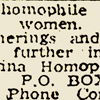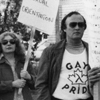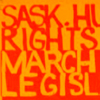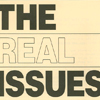The Canadian gay and lesbian rights movement has been remarkably successful in achieving most of its original goals in little more than forty years. Before 1969 consensual male homosexual activity was illegal in Canada and only a few lesbians and gay men were open about their sexuality. By 2007 gays and lesbians had achieved human rights protection against discrimination on the basis of sexual orientation and had won legal recognition of their familial relationships. At present there are large and vibrant LGBT communities in most Canadian urban centres.
Like other social change movements, lesbian and gay organizations used and were affected by print advertising and advocacy. In prairie cities organizers began to recruit members to social support and political action groups in the early 1970s by placing classified ads in daily newspapers. An ad of this type was rejected by The Western Producer, the Saskatoon-based farm weekly, and its right to refuse publication was upheld in 1974 by the Saskatchewan Human Rights Commission. This was the first occasion that a Canadian human rights commission had actively investigated a complaint of anti-gay discrimination.
Another refusal of advertising sparked Saskatchewan’s first gay demonstration in June 1975. Twenty people protested the Saskatoon StarPhoenix’s rejection of an ad based on the results of a poll that the Gay Community Centre had taken of candidates running in a provincial election. At the time similar poll ads were accepted from other groups.
In September 1975 the University of Saskatchewan student newspaper, The Sheaf, printed a small classified ad – “Anyone interested in participating in a campus gay organization. Contact Doug Wilson, Box 203 College of Education.” This ad led to the immediate suspension of Wilson from some of his graduate student duties and sparked a year long high profile campaign for his reinstatement and an end to anti-gay discrimination.
Limited resources and some discomfort in openly publicizing the venues of gay events restricted public advertising by homosexual groups. Organizational newsletters and posters hung at gay centres and a small number of ‘sympathetic’ businesses kept gays and lesbians abreast of current events and issues. Some street postering was done in Saskatoon for public meetings and demonstrations and for social events that welcomed straight allies.
In response to a refusal of an official proclamation recognizing Regina Pride Week that city’s Lesbian and Gay Pride Committee purchased a full page ad in the June 16 1990 Leader-Post. The ad outlined Pride’s history and the legal status of sexual minorities and was most remarkable in including the names of 111 individuals, many Regina gays and lesbians, who sponsored the page.
The public battle between pro and anti gay right advocates in Saskatchewan erupted in the October 1991 provincial election. During the campaign supporters of several Conservative candidates distributed literature attacking homosexuality and its supposed support by the NDP. In a major intervention the Coalition in Support of the Family, self-described as a “non-partisan association of concerned citizens dedicated to the preservation of traditional family values” distributed 170,000 copies of a forty page booklet The Real Issues. Where Do They Stand? The booklet purported to represent the positions of the Liberal and New Democratic parties on abortion and homosexuality.
The announcement in February 1993 that the Saskatchewan Human Rights Code would be amended to protect lesbians and gays unleashed a massive distribution of pamphlets in opposition, especially in rural areas. One publication Your MLA Doesn’t Want You To Read This, mailed to 150,000 homes, claimed that 95% of male homosexuals reported having over 1,000 different sexual partners. The Saskatchewan Human Rights Commission decided that the brochure did not constitute hate literature although its governing act then prohibited the publication of material which exposed individuals or groups to hatred or ridicule.
The issue of access to newspaper advertising was revisited in 1997 when 100 demonstrators rallied at the Saskatoon StarPhoenix to protest an ad placed in the June 30 issue by Hugh Owen, a Regina resident. The display ad featured four Biblical verses, an equal (=) sign and two stick figures holding hands with the universal symbol for NO superimposed. In response to the protest the newspaper declared that it had accepted the ad because “the laws protecting people from discrimination have to be viewed against the backdrop of freedom of speech.” Nonetheless in light of “feedback from the community” the StarPhoenix said it would not print similar advertisements in the future. Several people filed human rights complaints against the newspaper and Owens.
|






